History
OPERATION ‘OVERLORD’ – THE ROYAL AIR FORCE REGIMENT IN NORMANDY AND THE LIBERATION OF EUROPE
Dr Nigel Warwick, Corps Historian RAF Regiment
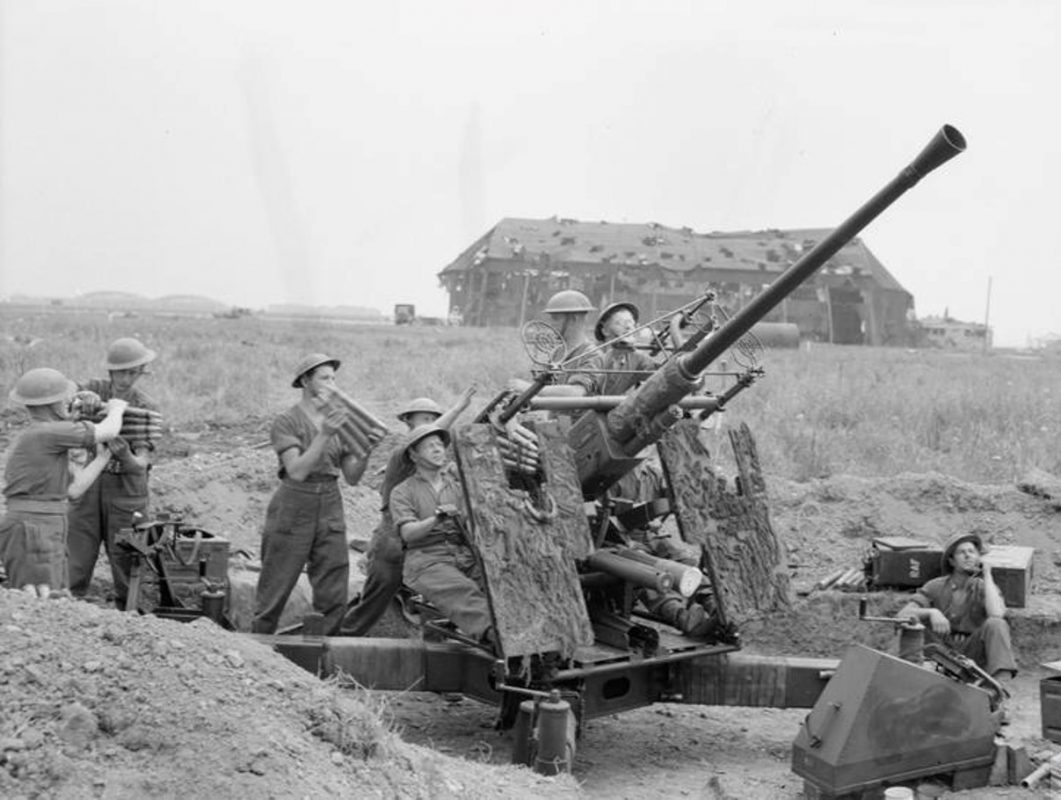
Sunday 6th June 2021 marks the 77th Anniversary of the Allied landings in Normandy in which the RAF Regiment participated.
The role of the Allied Air Forces during Operation Overlord was vital to the success of General Sir Bernard Montgomery’s 21st Army Group land operations. Second Tactical Air Force (2TAF), comprising 2, 83, 84 and 85 Groups RAF, under the command of Air Marshal Sir Arthur ‘Mary’ Coningham, was to maintain air superiority over the beachhead and provide air support to the British and Canadian ground forces. A vital component of success over the following weeks was the establishment of advanced airstrips and landing grounds for fighter and ground support aircraft and these would have to be defended from attack from the ground and air.
The primary role of the Royal Air Force Regiment in the days following the landings was to provide light anti-aircraft (LAA) protection to the forward airfields that were to be captured or constructed within the Normandy beachhead. In later weeks, rifle and armoured car squadrons were to deploy on airfield ground defence and escort and reconnaissance roles for RAF engineering, construction and intelligence specialists.
From the earliest stages of preparation in summer 1943, it was intended that the RAF Regiment should be included in the D Day landings, and consequently a Regiment officer was assigned to the planning staff for Overlord at Norfolk House in St James’s Square. Later a Regiment Branch was formed within Supreme Headquarters, Allied Expeditionary Force (SHAEF).
ALLIED TROOPS LANDED
The RAF Regiment component of 2TAF for Operation Overlord was to consist of LAA squadrons, each equipped with 12 Bofors 40-mm L60 anti-aircraft guns, rifle and armoured car squadrons, all controlled by nineteen Wing HQs. The rifle squadrons, each with four 3-inch mortars and well-endowed with Bren LMGs, had the firepower to hold forward airfields and dominate the surrounding ground. The armoured car squadrons, each equipped with 24 Humber 4 x 4 light reconnaissance cars, added a mobile and flexible element that could provide long-range reconnaissance, convoy escorts and rapid reinforcement. Regiment Mobile Wing HQs would fulfil a control and coordination role.
In the early hours of 6 June 1944, Allied troops landed successfully in Normandy, and despite some setbacks, by nightfall, the British, Canadian and US divisions had linked up with their airborne troops and held a bridgehead five miles deep.
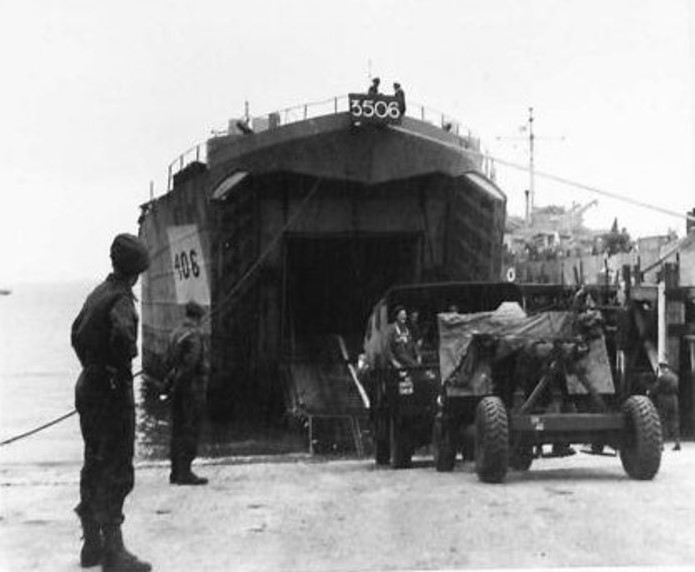
ARRIVING OFF JUNO BEACH
The Commander, RAF Regiment in 83 Group RAF, Colonel R.L. Preston, Coldstream Guards, and his staff, had sailed with the first assault troops. Despite the first elements of the Regiment arriving off ‘Juno’ Beach at H+4, the beaches were heavily congested, and they were unable to land until the morning of D+1. They were soon joined by two Mobile Wing HQs, 1304 and 1305, suffering casualties from a mine in the run in to the beaches.
2834, 2809 and 2819 LAA Squadrons also disembarked across ‘Juno’ and ‘Gold’ Beaches, the former Squadron having been bombed by enemy aircraft twice during a night raid on the waiting landing ships, killing one gunner and seriously wounding another. Many RAF Regiment gunners had manned the AA guns on the assault ships in the trip across the Channel. With the need to land 25,000 troops alone on ‘Juno’ Beach there were long delays due to the lack of ferries to transport men and materiel ashore, vehicles being ‘drowned’, and considerable frustration for the airmen whose orders had been to establish their guns ashore and on the airstrips within 12 hours of the first landings.
BAZENVILLE
At Bazenville airfield, ‘A’ Flight of 2834 Squadron had the first RAF Regiment Bofors guns in action before midnight on the 7 June, and by late on 8 June, all five LAA Squadrons in the first tranche had been landed. Following the deployment drills that had been regularly rehearsed over the last few months, the Squadron and Flight Commanders carried out their recces and directed the gun detachments rapidly to their allotted airfields at Bazenville, St Croix-sur-Mer, Beny-sur-Mer, Camilly and Coulombs.
Fierce fighting was still occurring within a mile of one airfield and ‘overs’ from nearby actions were frequent. Small arms and sniper fire from enemy parties concealed in the woods overlooking the airfields were a frequent problem. As the original plan for the RAF Regiment had not envisaged the need for rifle squadrons to provide close defence for the airfields, the LAA squadrons also had to assume responsibility for local ground defence and anti-sabotage measures, made all the more difficult with 100% manning of the Bofors guns.
A week later, a second tranche of five Regiment squadrons and Wing HQs were landed as more airfields were opened up. Two of those LAA squadrons, 2817 and 2876, landed after their convoy had been attacked by ‘E’ Boats off the coast near Le Havre. A tank landing craft carrying squadron vehicles and guns was sunk, three airmen were killed, and three more seriously wounded.
The build-up continued apace, and by D+12, there were ten Mobile Wing HQs and LAA squadrons deployed across the ten airfields in the beachhead. Landing strips were the highest priority, and the Airfield Construction Groups, which had also arrived on D+1, moved out to establish and construct new landing grounds with bulldozers, graders and steel track. This was done under the protection of the Regiment’s Bofors guns, and once the work was completed the aircraft were called in. The first aircraft flew in to Coulombs on the morning of 17 June, and within hours it was being strafed by three Bf 109s, to which the Regiment guns responded with some effect. Forward airfields, were frequently shelled by enemy 88-mm and 210-mm guns; the former, firing air-burst shells, being particularly unpleasant. 2834 LAA Squadron at Christot found itself only three miles from the enemy gun line. On one day, more than 100 shells fell on the airstrip causing casualties among RAF personnel and damaging aircraft. So heavy was the shellfire at this airstrip on one day that the aircraft were flown off and sent back to the UK until matters quietened down.
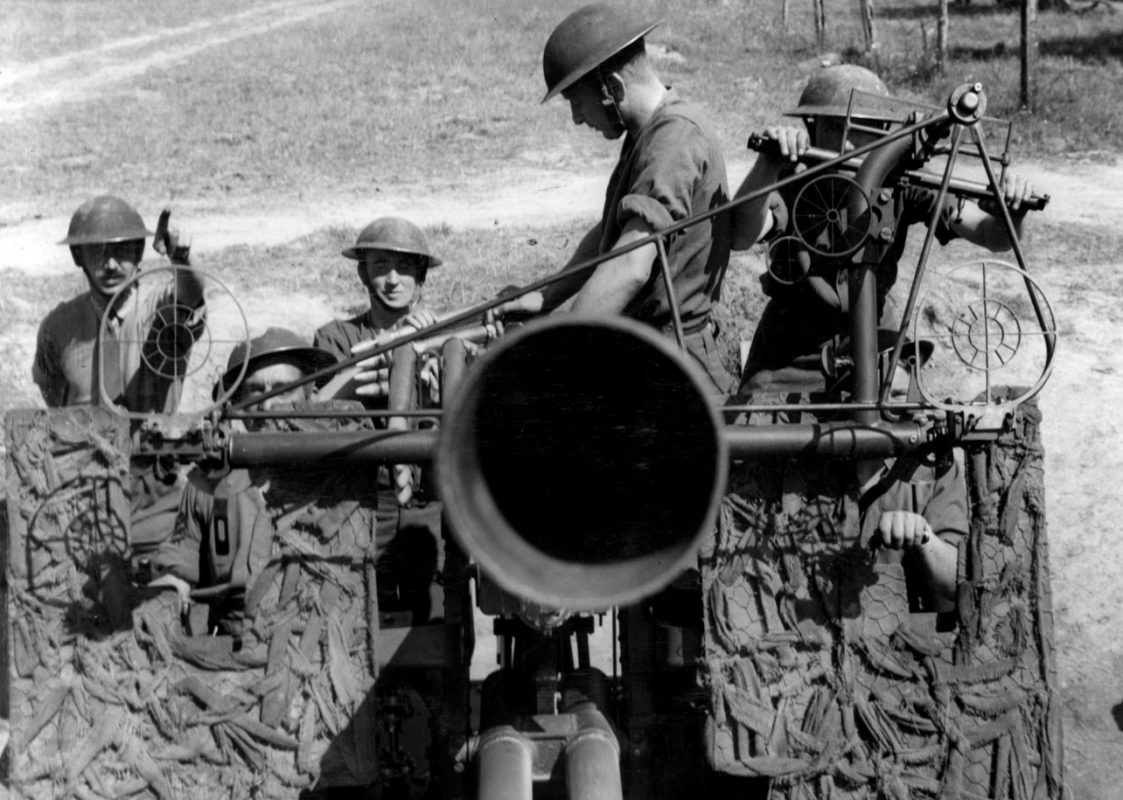
EARLY THREATS
The early threat from the Luftwaffe over the beachheads is often downplayed in popular accounts, but enemy aircraft soon appeared in numbers over the airfields. Between 9 June and 11 July, Coulombs was attacked by a total of 77 sorties by Bf 109s and Fw 190s. Hits were claimed at times by 2876 Squadron, but the deterrent effect of the Bofors barrage was inestimable. By the end of the month, however, the Regiment LAA squadrons could claim 14 enemy aircraft destroyed and 13 damaged. Further supplementary LAA support was provided by two Army LAA regiments, which had been planned to arrive after the RAF Regiment on D+4. When not fighting off air attacks, the Regiment airmen were also called on to assist with refuelling and rearming of fighter aircraft with the high intensity of air operations.
The British and American forces had linked up and the Allies now set about enlarging their foothold and defeating the enemy counterattacks around Caen and the Brittany peninsula. The rifle and armoured car squadrons of the RAF Regiment had been held back in the United Kingdom until late July and early August. Seventeen squadrons and nine Mobile Wing HQs were then despatched to France. Two rifle squadrons and one armoured car squadron arrived in late July as reinforcements, and deployed with the fighter, ground attack and reconnaissance squadrons of 83 Group RAF. The remainder went to 84 Group, which had also arrived, and it was allocated eight LAA, two rifle and two armoured squadrons. Three more rifle squadrons were assigned to special duties with 2 and 85 Groups, bringing the total RAF Regiment deployment in France to nineteen Wing HQs, eighteen LAA, eight rifle and four armoured car squadrons.
The rifle and armoured car squadrons were employed on a number of tasks, some of a ground crew or engineering nature, including assembling rocket projectiles, breaking down and re-belting ammunition for fighter aircraft, laying steel tracking on new strips, constructing aircraft dispersals, but most importantly on mine clearance, and as escorts to the three Airfield Construction Groups. A rifle flight of 2726 Squadron lifted out and neutralised 115 ‘Teller’ and 20 ‘S’ type mines without a single casualty from the recently captured town of Villers-Bocage, which had been the scene of bitter fighting.
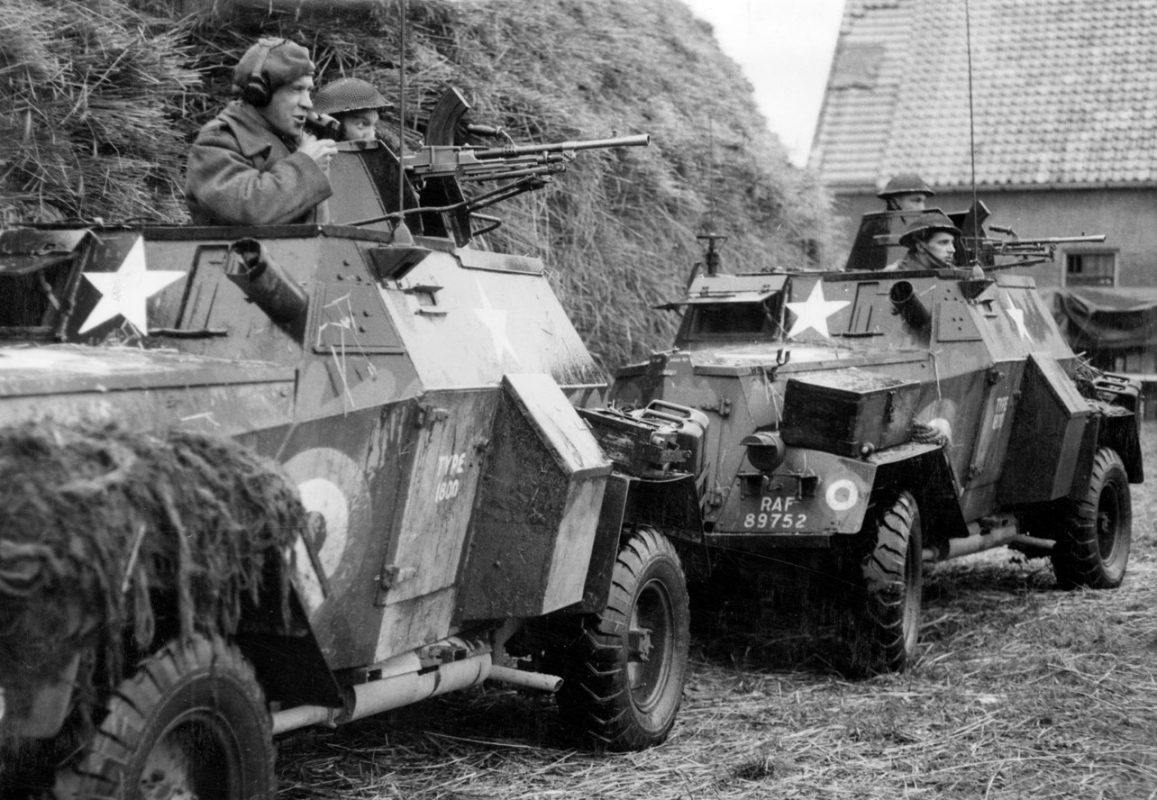
BREAKOUT
Following the breakout from the Normandy bridgehead, the RAF Regiment planned to use fast moving mobile detachments of armoured car and rifle flights to provide escorts to RAF Air Technical Intelligence (ATI) teams to investigate crashed enemy aircraft, captured airfields and radar installations. One mission of note, followed the launch of Operation Bluecoat by 2nd Army on 30 July. The main aim was to capture the high ground to the south-west of Bayeux. Moving with 214th Infantry Brigade Advanced HQ was an ATI reconnaissance team, escorted by a flight of 2806 Armoured Car Squadron and a rifle flight from 2726 Squadron. Their task was to examine technical equipment in an enemy radar station located on Mont Pincon, at the earliest opportunity. It was not known if the enemy was in occupation, and the airmen came under mortar and shell fire as they approached the crest. They proceeded through the infantry forward positions and entered the radar station. A counter-attack caused their withdrawal, and it wasn’t until three days later they reoccupied the site, and with the assistance of five sappers set about de-lousing the area of mines and booby-traps. Spasmodic shelling continued and a sniper gave trouble, but was located and eliminated.
Only a few days later, following up on an attack by the Canadians, two flights of 2827 Rifle Squadron and a flight of Humber light reconnaissance cars of 2806 Armoured Car Squadron escorted an ATI Team to a V1 Flying Bomb installation located in a quarry at Haut Mesnil, 10 miles south-east of Caen. A complete search was made, punctuated by mortar, shell fire and small arms fire. The force withdrew without casualty, only to see the quarry overrun by a German counterattack.
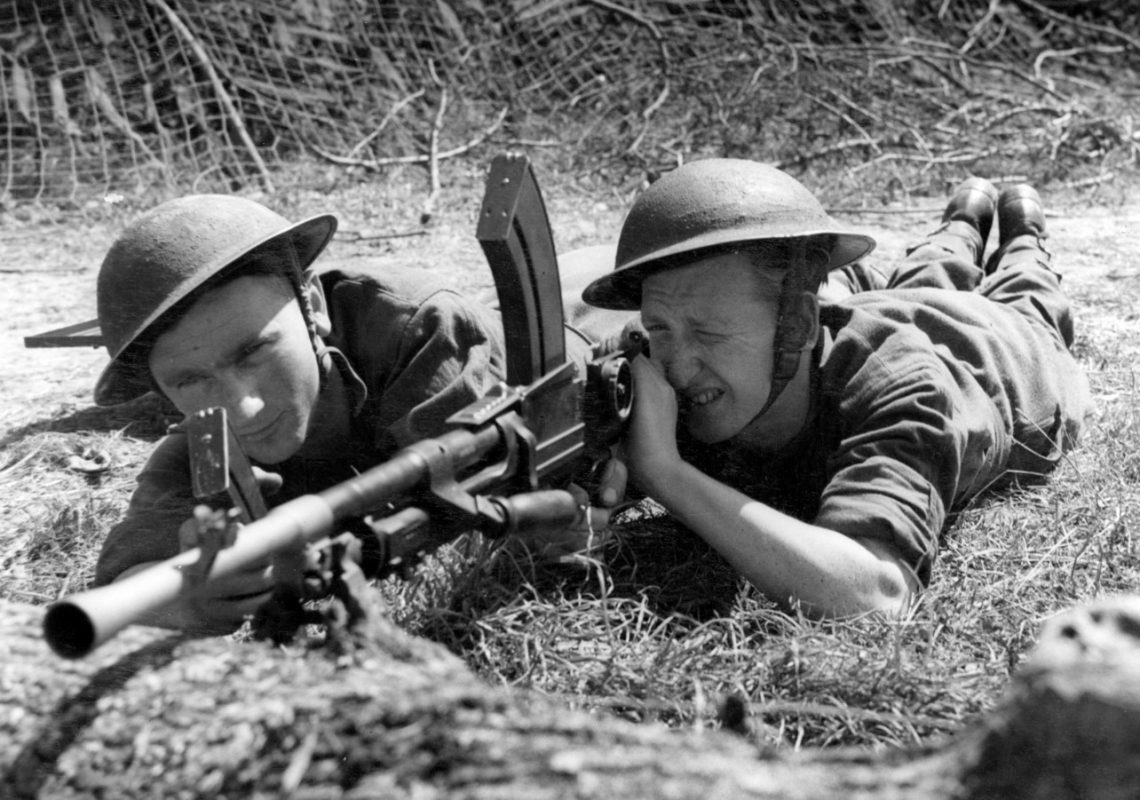
LONGCHAMPS RACECOURSE
With the Allied breakout from Normandy in mid-August, the RAF Regiment deployed the detachments of armoured car and rifle flights to move on to captured airfields and other installations. 2798 Squadron, which had been protecting radar stations and doing ATI work in the American sector around the Cherbourg Peninsula and Brittany, joined the rapid advance of Patton’s 3rd US Army, and early on 25 August, became one of the first Allied units to enter Paris. Assisted by the French Maquis, it followed a circuitous route owing to sniping and skirmishing on the outskirts of the city, and secured the Longchamps racecourse as a potential radar site.
The Nazi regime had unleashed the first V-1 flying bombs in mid-June, and later in August, the V-2 rockets. To neutralise these new ‘terror’ weapons, ‘Bow’ Force, composed of three RAF Regiment armoured car squadrons and a rifle squadron, was despatched with ATI teams in rapidly moving mobile columns to secure and investigate launching sites from Le Havre, Rouen to Calais, and then Antwerp and Bruges.
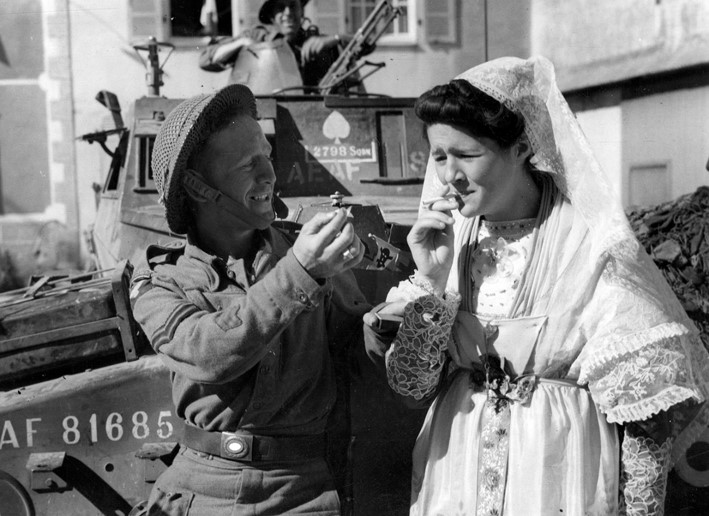
SEPTEMBER 1944
By September 1944, with the advance reaching the Netherlands, there were Regiment armoured car and rifle squadrons on the front line. With the shortage of ground troops due to heavy casualties in the Normandy fighting, the RAF Regiment was asked to provide squadrons to go into the line, fighting alongside the units of Guards Armoured Division, 43rd Wessex Division, the Czechoslovak Armoured Brigade and the 1st Canadian Army. Other Regiment squadrons were involved in protecting RAF signals and radar units during the Ardennes offensive and had an exciting but successful time protecting their charges from encirclement during the German offensive that became known as the Battle of the Bulge.
The LAA Squadrons continued their vital work as the Allies advanced into Germany, with 2875 Squadron being credited with destroying the first jet fighter, a German Messerschmitt Me 262, by ground fire. The worth of these squadrons was made all the more apparent when the Luftwaffe launched Operation Bodenplatte,a mass air attack on New Year’s Day 1945 against the Allied airfields in northern France, Holland and Belgium. The RAF Regiment claimed 46 destroyed and 42 damaged of the 335 attacking aircraft.
By VE Day 8 May 1945, 75 squadrons (six armoured car, 28 LAA and 41 rifle squadrons) of the Regiment were deployed on the Continent. RAF Regiment task forces played a major role in taking the surrender of thousands of German military personnel in the Schleswig-Holstein region in northern Germany, Denmark and Norway. This included tense confrontations, and some persuasion, by RAF Regiment task force commanders with determined parties of the Waffen SS and German Kriegsmarine who refused to cede under the formal announcement of the cease-fire. Young Flight Lieutenants found themselves responsible for large airfields, holding up to 5000 officers and men of the Luftwaffe, as well as Army units, and large parties of Russian prisoners of war, while Admiral Karl Dönitz, Hitler’s designated successor, was arrested by Squadron Leader Mark Hobden.
Operation Overlord and the liberation of Europe had absorbed the greatest proportion of RAF Regiment in overseas theatres. The vital contribution of Regiment Wings and Squadrons to the success of air operations by the 2nd TAF had made the case for permanent retention of the RAF Regiment in the post-war Royal Air Force.
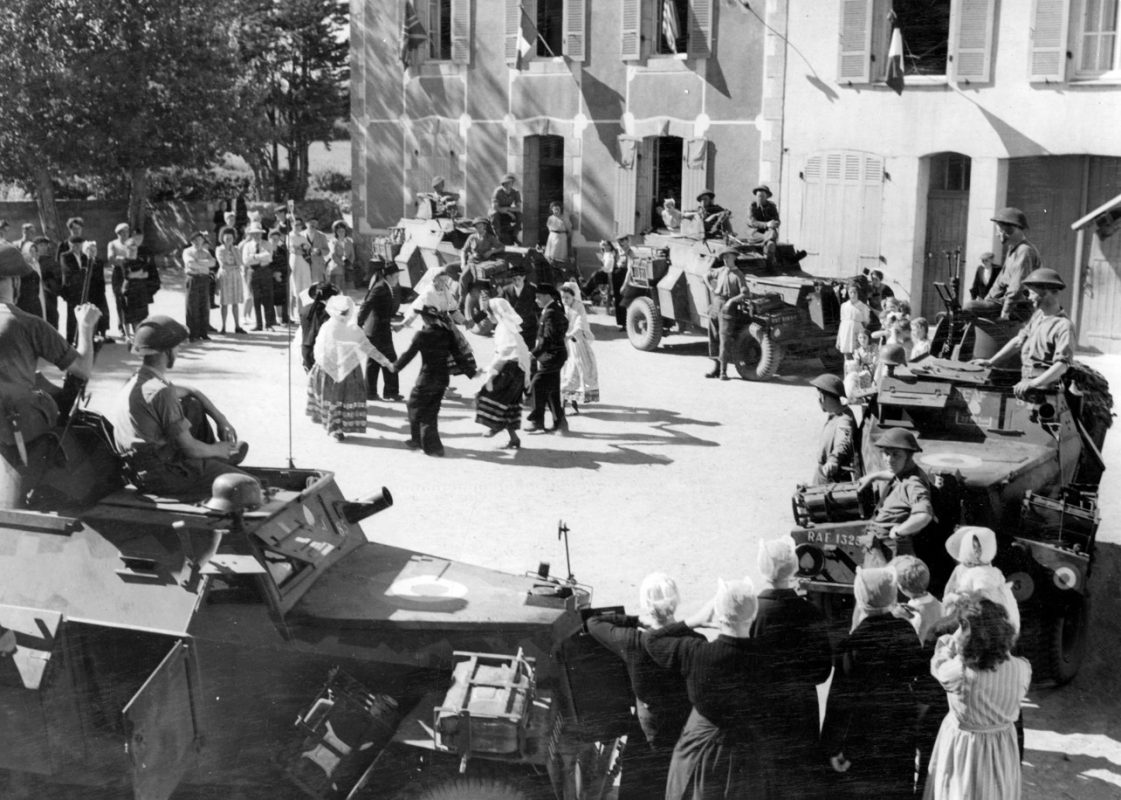

Great piece of history well done all.
People do not realise how much the RAF REGIMENT we’re involved in the war since their formation in February 1st 1942 and up to this day thay raw doing the same thing
Great read
Thank you
That’s amazing,had no idea the Regiment played such a large part in the invasion and beyond,Respect to those who went before us.P
My father-in-law, George Bernard took part in this push with The RAF Regiment through France, Belgium, Holland and into Germany. I wish I had gleaned more details from him but like many, he was reluctant to talk about it.
Mark Hobden kept his arrest of Admiral Donitz very quiet. I think the magnitude of the event deserves a painting of a defining moment in the history of the RAF Regiment. we have enough historical reporting to recreate the visual scene?
Thank you for the great read. I am so proud of the Regiment and their achievements and adaptability in all things they do.
My Dad was RAF armourer/bomb disposal who was in Belgium at the time of the Battle of the Bulge, mentioned by Dr Warwick. An officer suggested that if Dad and his mates wanted something to do they could go up the road and give the Regiment a hand as they were, ‘having a go’ at the Germans. This was when Dad’s flight had been attached to the Canadian front line, near Brugge and where they had been pinned down for three weeks. Dad then followed the Canadians to Knokke (ALG B-83) where he was engaged on a massive demining operation for the next six months. The Regiment would have also been there defending the airfield from several Messerschmidt attacks in the January of 1945. Does anyone know which RAF Regiments were operating in this part of Belgium during the Battle of the Bulge/Operation Switchback?
My father, George Roland Goodson, was a Flight Sergeant with 2806 Armoured Car Squadron. He landed on D+2 and was called back to England 2 days before Market Garden.